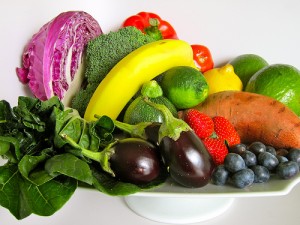 We don’t call this publication “GoodFood World” for no reason; we believe everyone should have access to good, nutritious, safe food.
We don’t call this publication “GoodFood World” for no reason; we believe everyone should have access to good, nutritious, safe food.
It turns out that the way the food industry processes our food is becoming more and more problematic.
Carlos Monteiro, Centre for Epidemiological Studies in Health and Nutrition University of São Paulo, Brazil, has written a commentary on ultra-processing titled Processing. The good, the bad, and the toxic, which appeared in the journal World Nutrition (October 2011). In it he says:
It follows that meaningful discussion of the impact of food processing on human health and well-being needs to make distinctions between different types of processing. Here, as a first attempt, I suggest that all specific forms of processing can be classified into three groups.
 First are processes that can be called good. Most of these modify whole foods in minimal ways and do not alter its basic nature. They may directly or indirectly enhance nutritional quality, or else be practically neutral in their effects.
First are processes that can be called good. Most of these modify whole foods in minimal ways and do not alter its basic nature. They may directly or indirectly enhance nutritional quality, or else be practically neutral in their effects.
Second are processes that can be identified as bad. These substantially degrade foods, or produce substantially degraded ingredients, or else – singly or in combination – are used as further degradation in the manufacture of ultra-processed products. This is most significant when such foods, ingredients or products are staples or commonly consumed.
The third class of process is those identified here as toxic. No food process is in itself poisonous, as is strychnine, say, or as is food contaminated with powerfully pathogenic micro-organisms; and if it was, and identified as such, it would be prohibited. Toxic processes defined as such here, are either carcinogenic, or harmful and addictive, or else identified as intensely pathogenic. In my view all toxic processes should be subjected to statutory regulation, and in one case in particular – hydrogenation – should be prohibited.
 Fellow food journalist Helena Bottemiller of Food Safety News found a USDA list of chemicals that can be used – mostly without labeling – to treat meat, poultry and egg products. You thought ammoniated “pink slime” was revolting; here is the list of “SAFE AND SUITABLE INGREDIENTS” according to the Food Safety and Inspection Service.
Fellow food journalist Helena Bottemiller of Food Safety News found a USDA list of chemicals that can be used – mostly without labeling – to treat meat, poultry and egg products. You thought ammoniated “pink slime” was revolting; here is the list of “SAFE AND SUITABLE INGREDIENTS” according to the Food Safety and Inspection Service.
Some of the ingredients listed are common items found in most kitchens, such as sodium chloride (salt), sodium bicarbonate (baking soda), and dilute acetic acid (vinegar), but some of those listed come directly from a chemistry lab. NOT the sort of thing I want in – or on – my food!
What to do? Simple…
Know the source of your food; eat whole, minimally processed, and organic; and you’ll avoid pretty much the whole list. I would have said “buy whole cuts of meat,” but the recent revelation of “blood glue” makes even those suspect.
And if you can grow some of your own in a pot, a box, or a garden, more the better!

